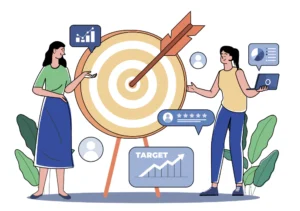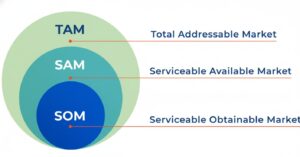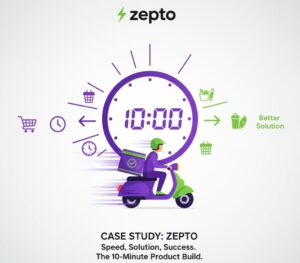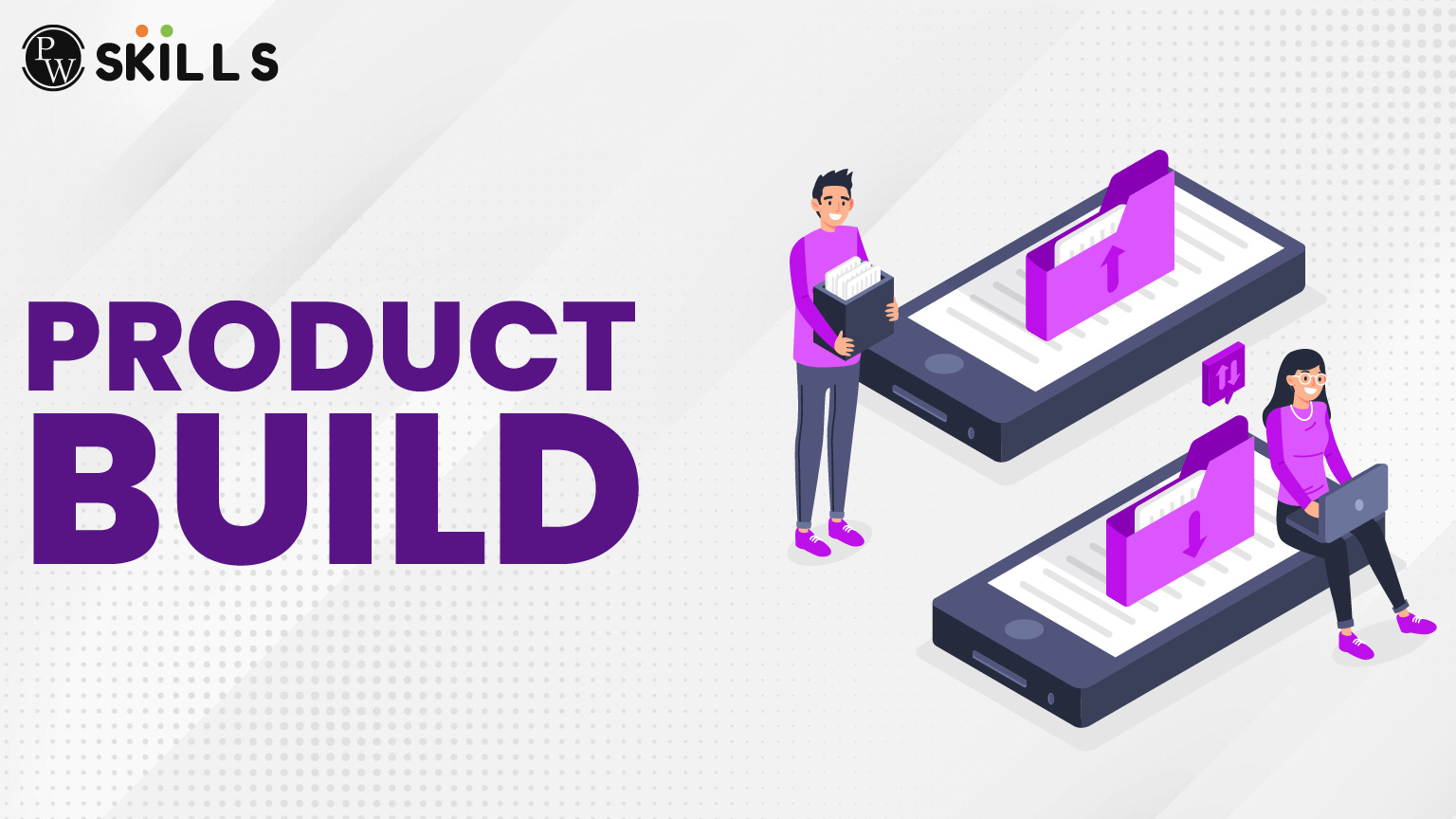“How to Create a Product in 2025” is more than just a search query. Product build is the first step in a challenging but immensely rewarding journey. Whether you are an entrepreneur with an idea worth a million, an engineer wanting to build an original product from scratch, or a founder looking for new product ideas, the process seems interesting yet hectic.
A successful product build is not an accident. Moreover it is a process that needs to be followed in a well-disciplined manner. This guide constitutes 8 step process that will help you convert your raw idea to market world.
We will simplify all methods around product build from validation to launch so that you have some professional guidance to learn.

What Makes a Product Build Successful in Today’s Market?
Before we dive into the product build steps, it is important to understand what successful product looks like. It’s no longer enough to just have excellent technology, efficient solution of real user problems will ensure success.
Successful Product builds are Solutions, not Features.
By 2025, the market rewards products that have solutions to specific pain points.
- Modern Product Build: Success in 2025 does not come from feature-rich, successful products; rather, it emerges from specific and deep user pains.
- Core Question: The ultimate focus of every product build: “What painful problem are we solving?”
- Solution Oriented Approach: What the product is, in the true sense, is a main idea; the solution of the user’s problem is the true value you offer, which would give long-term customer loyalty.
In the Building Process, Human Centered Design Comes First
The products that most stick in one’s mind always prioritize the user experience above all else.
- User Focus: Most long-lasting and memorable products are those which put the entire product build around the users’ experience.
- HCD Command: Human-Centered Design requires you to deeply research and understand your target customer’s workflow, motivations, and pain points before development starts.
- Building Empathy: This points that whatever you are going to present as a solution resonates well with how users live and work to become certain as a success result.
The 8-Step Product Build Journey: An Overview
The process of how to create a product to sell can be further break down into four manageable stages, ensuring you move from concept to market with clarity, focus and consistency.

Stage 1: Ideation & Validation (Steps to Create a New Product Ideas)
The journey starts not with the product, but with the idea and its proof. Following product build stages ensures that no one gets to build something that no one wants.
Step 1: Defining the Core Problem and User
- Defining a Key Problem: Shift the energy from the product idea to the real problem solved by the product.
- Persona Development: Be very specific in defining your ideal customer (persona) including demographic aspects, frustrations, and daily routines.
- Validate the Need: Conduct extensive interviews and surveys with your target users. Can they articulate the problem you’re aiming to solve, and how important is it to them?
- North Star: This insight will become the non-negotiable north star for your entire product build.
Step 2: Market Viability Check & Competitive Analysis
- Prove the Market: Having competitors is usually a good sign because it proves that a viable market already exists for the solution.
- Competitive Landscape: Find both direct and indirect competitors and take note of their strengths, weaknesses, and most importantly, what they fail to deliver.
- Find Your Gap: The weaknesses of your competitors represent “white space” – that is, your unique value proposition and foundation for new ideas for your product.
- Market Metrics: Know the market size (TAM/SAM/SOM) and look into current pricing structures in order to assure your idea is viable for market.

Stage 2: Planning the Product Build (Creating a Product from Scratch)
Now that the validation is done, this stage focuses on the tactical plan which answers how to create such a product from scratch without needless drain on resources.
Step 3: Mapping the Minimum Viable Product (MVP)
- Define the Essentials: The MVP of the product with the minimum number of features required to solve the core problem
- Features Prioritization: Every potential feature must be assessed: Is it absolutely essential for the initial solution? If not, it’s going to a later version.
- Resource Efficiency: A well-focused MVP is the quickest and least expensive way for a user to actually get his hands on the product. That is something especially important when you come up with something new without having built it yet.
- Iterate from the Core: The MVP allows you to add in real-world data to guide future feature development, minimizing wasted product build efforts.
Prototyping Tools Tip: When mapping out your initial digital MVP, you don’t need a development team yet. Use tools like Figma, Canva, and Proto.io to quickly create clickable, high-fidelity prototypes to test user flow before any coding begins.
Step 4: Finding the Right Partners to Help in Product Build
- Realise Limitations: Accepting that you cannot be an expert in all areas (engineering, design, manufacture, legal) is a strength, not a weakness.
- Digital Partners: As in your other digital product build, hire those specialized in UX/UI designer, front-end, or cloud architect.
- Physical Partners: Seek the best manufacturers, negotiate with suppliers, and establish an efficient supply chain and logistics strategy.
- Strategic Leverage: The right partners bring speed, expertise, and efficiency, leaving you to focus on the high-level vision of your product build.
Stage 3: Development & Iteration (The Stages of New Product Development)
This is the true development of your product, following the stages of new product development.
Step 5: Engineering, Prototyping, and Testing
- The Product Build Cycle This is the very core of the stages involved in new product development- continuous building, testing, learning, and iterating.
- Low FI- Start Simple: Begin with simple sketches or wireframes or pure mock-ups for testing purposes on how the workflow and user flow works before investing a lot in anything.
- User validation (High Fidelity): Putting together working prototypes (digital or tangible) and testing them in the real world with actual users, with a mission to find bugs, usability issues, and confusion.
- Reduce Costly Changes: Testing is an investment. Fixing errors during prototyping is exponentially cheaper than fixing them after launch or during production scale-up.
Step 6: What to Consider While Building a Product from Scratch
- Protect IP: Immediately patent, trademark, or copyright any intellectual property needed to safeguard your product’s building from scratch.
- Scale up: Ensure that the technology or supply chain that supports you is built for scalability. A strong foundation today will guard against costly disruptive re-engineering later.
- Legal & Compliance: Both types of licenses have the same requirements at the outset, including data privacy (GDPR, CCPA), terms of service, and industry-specific certifications.
- Financial Scoping: You should keep the budget and timelines tightly controlled, as scoping is the primary cause of failure in a product build.
Stage 4: Pre-Launch & Go-To-Market
The last step is connecting your complete product build with the waiting market.
Step 7: Integrating Social Media for Early Feedback
- Beyond Promotion: The role of social media goes beyond simple advertising; it plays a major role in refining product build.
- Test Messaging: Use social platforms to message test various value propositions which will show what language resonates best with the audience.
- Develop the Hype: Take people along on your journey of creating this product from scratch to make this transparent and exciting, turning followers into early advocates.
- Qualitative Data: Polls and Q&A sections can be useful to obtain quick, qualitative feedback on minor design decisions or feature options.
Step 8: The Final Go-to-Market Strategy
Plan by writing out a comprehensive launch plan that include every channel (press, email, content) to engage the maximum impact on day of launch. This would guide how to develop a new product in the market.
- The Right Price: Finalize your pricing model. Ensure it reflects the reliablity to the customer, not just you.
- Logistics & Support: Confirm all distribution, fulfillment, and customer support infrastructure is in place. You must be ready to serve the customers you acquire.
- Example of Product Build: The success of this launch phase is a direct reflection of all the thoughtful work that went into each step on the product build process beforehand.
Case Study: A Successful Product Build Example of Zepto
To study how to build an excellent product, take an example of Zepto. It has not invented any new product for shipping groceries; rather, it transformed the delivery experience for consumers.

The Problem Blinkit/Grofers Went Through during validation phase
- Inconsistent Experience: Earlier players in quick commerce claimed to offer “fast” delivery (45-90 minutes), but they were mostly inconsistent in that, resulting in long, unreliable waits.
- Mismatched Solutions: This meant that for consumers in urgent need of items such as milk, bread, or last-minute items long, random waits negated the value of the product.
- Un-met Demand: The actual gap in the market was not delivery, but instant, reliable delivery from the smallest to big essentials.
Solution for Building Product through Zepto (The 10-Minute MVP)
- Reframe your Product: Zepto’s product build was not just the app interface; the core product was the guaranteed 10-minute delivery network. They successfully answered how to create a product from scratch by redefining the operational standards of an existing service.
- Scope of MVP: This was their Minimum Viable Product (MVP), the 10-minute promise itself. They scaled their technology around this single, powerful value proposition.
- Operational Density: To make this happen, Zepto invested heavily in the infrastructure of micro -stores, so closely kept as to make the distance to customer delivery within hyper-local reach.
Execution and Market Impact
- Engineering: The predictive product built by Zepto has optimized routing algorithms to manage the inventory and path taken by the rider fully within that 10-minute window.
- Reliability Over Cost: Competitive pricing is one of the many factors that create differentiation from other competitors. Their main point of differentiation is the reliability and speed of their services. Customers pay a little more or more competitive price for the confidence in delivering their products on time, making the service highly addictive by using their most urgent need.
- Market Domination: It quickly captured a big share in the market and made its presence felt as a reliable product build prototype in the quick-commerce world by offering exactly what competitors could not consistently deliver (instantaneous speed).
Important Lesson from Existing Products
- Iteration is Innovation: Zepto demonstrates that one doesn’t always need to generate a completely new product idea from scratch. One can simply take an existing product category and launch it, hence meeting with immense success.
- Stick to the Pain Point: If you are working on an existing product, find out the biggest single point of failure, friction, or dissatisfaction for current users. Design your product build to absolutely fix that pain point.
Your Product Build Journey Starts Now
The more effort you put into the foundation of your product building, the more it determines your success in the end.
- Final Encourage: Building a product is difficult, requiring patience and professionalism, but has great rewards.
- Leverage Structure: With these eight structured steps, you can navigate through the product development lifecycle in 2025.
Last Checklist Before Launching in 2025:
- Did you validate your solution with at least 10 target users?
- Is MVP defined correctly and is this in scope?
- Is your legal IP protection secured?
- Is pre-launch community set up done?
Master Practical Approach with PW Skills
Now you know how to build a excellent product, but even the raw idea or best innovation requires efforts. A perfect product build is only half the battle; the final Go-to-Market Strategy depends completely on execution.
For making sure that you are covering every aspect to build your product, a course will help you to master product management skills. The PW Skills Product Management Course prepares you for all aspects with knowledge. Speed up the success of your products. Enrol now and complete your journey from ideation to execution.
Validation is the most critical stage to ensure the product build addresses a real and profitable problem. MVP (Minimum Viable Product) is the simplest version of your product that delivers the core solution to validate the product build. Social media provides a platform for test messaging during product build, feedback on prototypes, and forming an early community. Total Addressable Market (TAM), Serviceable Available Market (SAM), and Serviceable Obtainable Market (SOM) allow to obtain the target market size.FAQs
What is the most important stage of product building?
What does MVP mean in product development?
How does social media help in product build?
How to determine the target market size?

